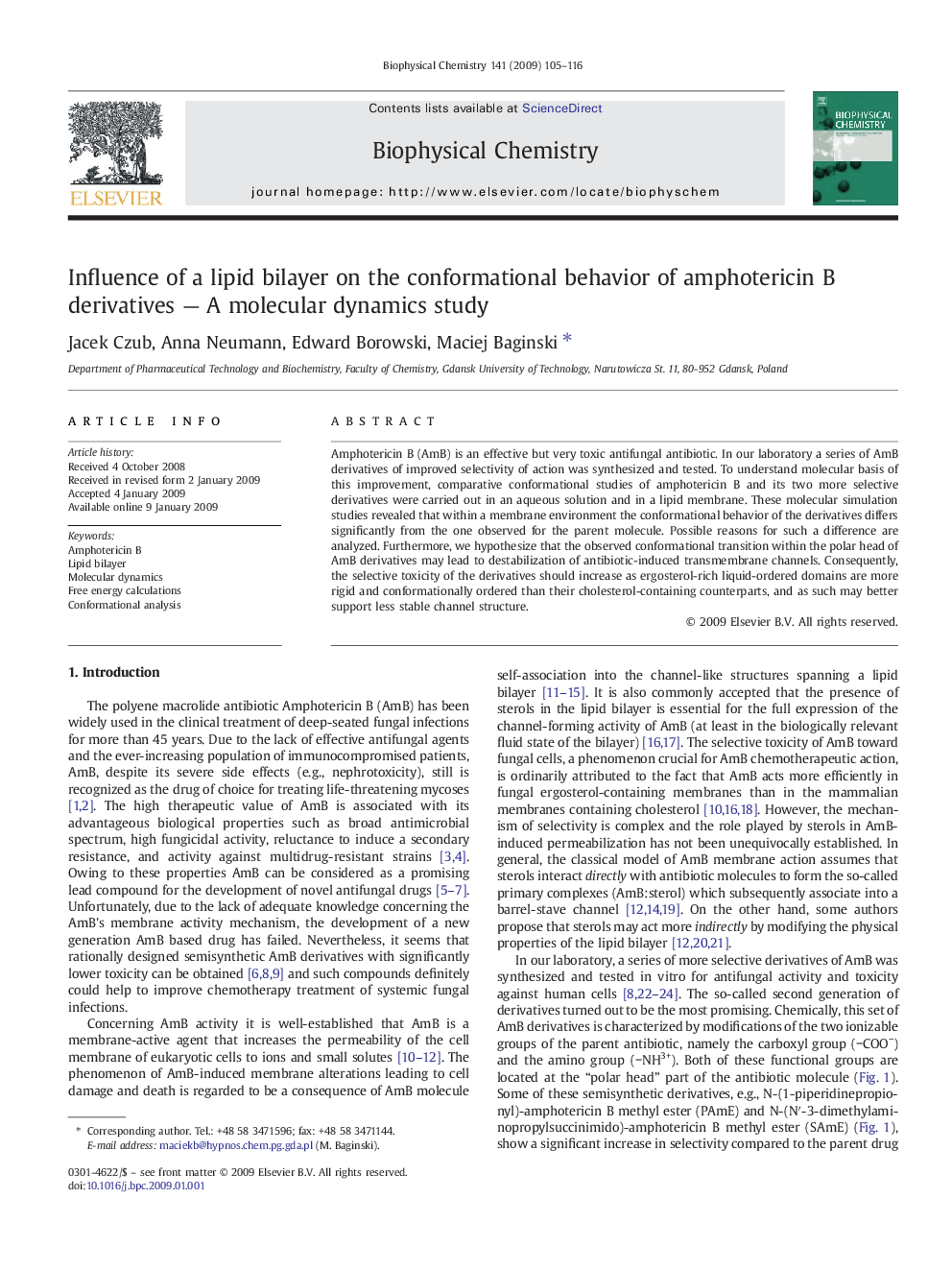| کد مقاله | کد نشریه | سال انتشار | مقاله انگلیسی | نسخه تمام متن |
|---|---|---|---|---|
| 5371809 | 1388844 | 2009 | 12 صفحه PDF | دانلود رایگان |

Amphotericin B (AmB) is an effective but very toxic antifungal antibiotic. In our laboratory a series of AmB derivatives of improved selectivity of action was synthesized and tested. To understand molecular basis of this improvement, comparative conformational studies of amphotericin B and its two more selective derivatives were carried out in an aqueous solution and in a lipid membrane. These molecular simulation studies revealed that within a membrane environment the conformational behavior of the derivatives differs significantly from the one observed for the parent molecule. Possible reasons for such a difference are analyzed. Furthermore, we hypothesize that the observed conformational transition within the polar head of AmB derivatives may lead to destabilization of antibiotic-induced transmembrane channels. Consequently, the selective toxicity of the derivatives should increase as ergosterol-rich liquid-ordered domains are more rigid and conformationally ordered than their cholesterol-containing counterparts, and as such may better support less stable channel structure.
Journal: Biophysical Chemistry - Volume 141, Issue 1, April 2009, Pages 105-116